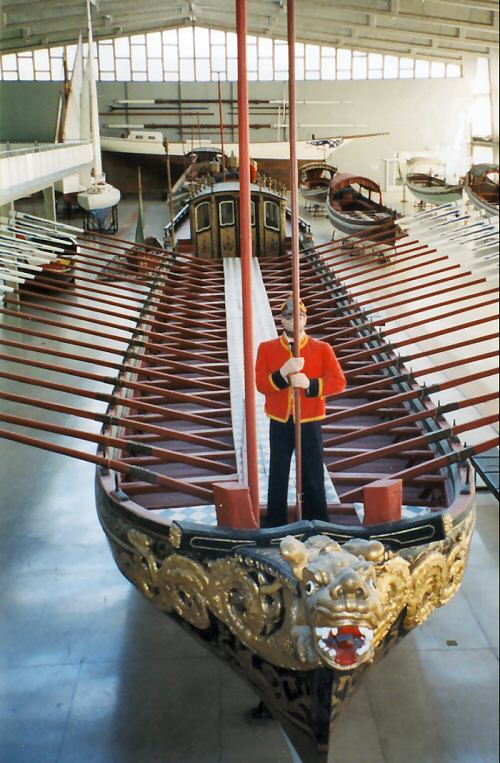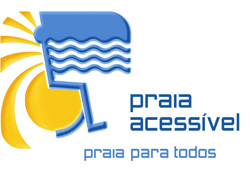The National Rehabilitation
Institute have disclosure
the accessible beaches list for 2013.All the beaches present on this annual list
were awarded within “Accessible Beach, Beach for All”, that make known the beaches that unite several terms
to be considered accessible.
To be considered
accessible beach to people with special needs is necessary that respect
strictly:
· Pedestrian easy access.
· Ordered Parking cars service to people
with disabilities.
· Access to the bathin area level, ramp
mechanical means use
· Walkways in the sand.
· Accessible Toilets and accessible
first aid.
· Lifeguard Presence at the beach
This initiative started in 2004, and
is a partnership between several institutions: National Rehabilitation
Institute, Water Institute, Tourism of Portugal and the Institute of Employment
and Vocational Training.
North’s
Hidrographic Region
Caminha
V. Praia
de Âncora Coastal beach – with beach
trotter.
Caminha – Coastal beach
Moledo – Coastal beach
Viana do
Castelo
Carreço – Coastal beach – with beach trotter.
Amorosa – Coastal beach – with beach trotter.
Esposende
Apúlia – Coastal
beach
Marinhas-Cepães – Coastal
beach – with beach trotter.
Póvoa de
Varzim
Zona Urbana-Norte – Coastal beach
Zona Urbana-Sul I – Coastal beach
Zona Urbana-Sul II – Coastal beach
Lagoa – Coastal beach
Paimó – Coastal beach
Quião – Coastal beach
Fragosa – Coastal beach
Vila do
Conde
Mindelo – Coastal
beach – with beach trotter.
Vila Chã (Moreiró)
– Coastal beach – with beach trotter.
Frente Urbana-Sul
(Turismo) – Coastal beach – with beach trotter.
Matosinhos
Pedras do Corgo – Coastal beach
Matosinhos – Coastal beach
Quebrada – Coastal beach
Aterro – Coastal beach
Angeiras-Norte – Coastal beach
Angeiras-Sul – Coastal beach
Agudela – Coastal beach
Funtão – Coastal beach
Leça da Palmeira – Coastal beach
Porto
Homem do Leme – Coastal
beach – with beach trotter.
Vila Nova
de Gaia
Aguda – Coastal beach
Miramar – Coastal beach –
with beach trotter.
Canide-Norte – Coastal
beach – with beach trotter.
Senhor da Pedra – Coastal
beach – with beach trotter.
Valadares-Sul – Coastal
beach
Espinho
Espinho-Baía – Coastal
beach – with beach trotter.
Espinho-Rua 37 – Coastal beach
Freixo-de-Espada-à-Cinta
Congida – River beach – with beach trotter.
Macedo de
Cavaleiros
Fraga da Pegada-Albufeira do
Azibo – River beach – with beach trotter.
Ribeira-Albufeira do Azibo –
River beach .
Ponte da
Barca
Ponte da Barca (Rio Lima) – River
beach – with beach trotter.
Marco de Canaveses
Bitetos – River beach – with beach trotter.
Póvoa de Lanhoso
Verim – River beach – with beach trotter.
Center Hidrographic Region
Ovar
Furadouro – Coastal beach
Esmoriz – Coastal beach
Murtosa
Torreira – Coastal beach
Aveiro
São Jacinto – . Coastal beach – with beach trotter.
Ílhavo
Barra – Coastal beach – with beach trotter.
Costa Nova – Coastal beach – with beach trotter.
Vagos
Vagueira – Coastal beach – with beach trotter.
Areão – Coastal beach – with beach trotter.
Mira
Mira – Coastal beach – with beach trotter.
Cantanhede
Tocha – Coastal beach – with beach trotter.
Figueira da
Foz
Quiaios – Coastal beach
Buarcos – Coastal beach – with beach trotter.
Torre do Relógio – Coastal
beach
Pombal
Osso da Baleia – Coastal beach – with beach trotter.
Leiria
Pedrógão-Centro – Coastal beach – with beach trotter.
Marinha Grande
Vieira - Coastal beach – with
beach trotter.
Guarda
Aldeia Viçosa – River beach – with beach trotter.
(please see also Tejo’ Hidrographic Region)
Arganil
Pomares – River beach – with beach trotter.
Sever do Vouga
Quinta do Barco – River
beach – with beach trotter.
Lousã
Bogueira – River beach – with beach trotter.
Graça – River
beach
Piedade – River
brach
Penela
Louçaínha – River
beach
Penacova
Reconquinho – River Beach
Góis
Canaveias – River beach
Peneda/Pêgo Escuro – River beach
Coimbra
Palheiros e Zorro – River beach – with beach trotter.
Oliveira
Hospital
Avô (Ilha do Picoto) – River beach
Seia
Sandomil – River beach
Vale de
Cambra
Rio Caima-Burgães – River beach
Tejo Hidrographic Region
Caldas da
Rainha
Praia do Mar – Coastal beach
– with beach trotter.
Foz do Arelho-Lagoa – Coastal
beach
Nazaré
Nazaré – Coastal beach
Peniche
Medão-Supertubos – Coastal beach – with beach trotter.
Baleal-Sul – Coastal beach – with beach trotter.
Lourinhã
Areia Branca – Coastal beach – with beach trotter.
Valmitão – Coastal beach – with beach trotter.
Areal-Sul – Coastal beach –
with beach trotter.
Peralta – Coastal beach – with beach trotter.
Alcobaça
São Martinho do Porto – Coastal
beach
Paredes de Vitória – Coastal beach – with beach trotter.
Torres Vedras
Santa Rita-Norte – Coastal beach – with beach trotter.
Centro (Santa Cruz)
– Coastal beach – with beach trotter.
Santa Helena – Coastal beach
Navio – costeira
Santa Rita-Sul – Coastal
beach
Foz do Sizandro – Coastal
beach
Mafra
Foz do Lizandro-Mar – Coastal
beach – with beach trotter.
São Lourenço – Coastal beach
Porto da Calada-Coastal Beach –with beach trotter
Algodio – Coastal beach
Sintra
Adraga – Coastal beach – with beach trotter.
Maçãs – Coastal beach – with
beach trotter.
Cascais
Poça - Coastal beach
Tamariz – Coastal beach – with beach trotter.
Conceição – Coastal beach – with beach trotter.
Carcavelos – Coastal beach – with beach trotter.
Almada
Tarquínio-Paraíso – Coastal
beach
Dragão Vermelho – Coastal
beach
Castanheira
de Pêra
Poço Corga – River beach
Guarda
Valhelhas – interior
(See also
CenterHodrographic Region)
Mação
Carvoeiro (Mação) –
River beach – with beach trotter
Gavião
Quinta do Alamal –
River beach – with beach trotter
Pampilhosa
da Serra
Janeiro de Baixo – River beach
Pampilhosa de Serra – River beach
REGIÃO HIDROGRÁFICA DO ALENTEJO
Sesimbra
Ouro – Coastal
beach with beach trotter
Setúbal
Figueirinha – Coastal
beach with beach trotter
Grândola
Comporta – Coastal
beach with beach trotter and amphibious crutches
Tróia-Mar –
Coastal beach
Pêgo – Coastal beach
Carvalhal –
Coastal beach
Melides – Coastal
beach
Santiago do
Cacém
Costa de Santo André
– Coastal beach with beach trotter
Sines
Vasco da Gama – Coastal
beach with beach trotter
São Torpes – Coastal beach
Odemira
Praia das Furnas – Coastal beach
with beach trotter
Carvalhal – Coastal beach
Zambujeira do Mar – Coastal beach
Mértola
Albufeira da Tapada Grande – River beach with beach
trotter
Algarve’s Hidrographic Region
Aljezur
Monte Clérigo – Coastal
beach with beach trotter
Vila do
Bispo
Salema – Coastal
beach with beach trotter
Lagos
Meia Praia – Coastal
beach with beach trotter
Luz – Coastal
beach with beach trotter
Porto de Mós – Coastal
beach with beach trotter
Batata – Coastal beach
Portimão
Vau – Coastal
beach with beach trotter
Rocha – Coastal beach
Alvor-Nascente (Três Irmãos) – Coastal beach
Alvor-Poente – Coastal
beach with beach trotter
Lagoa
Carvoeiro – Coastal
beach with beach trotter
Senhora da Rocha –
Coastal beach with beach trotter
Silves
Barcos/Armação de Pêra-Nascente – Coastal beach
Praia Grande-Nascente – Coastal beach
Albufeira
Rocha Baixinha-Nascente
– Coastal beach with beach trotter
Rocha Baixinha-Poente
– Coastal beach with beach trotter
Barranco das
Belharucas – Coastal beach with beach trotter
Salgados – Coastal
beach with beach trotter
Manuel Lourenço –
Coastal beach
Maria Luísa – Coastal
beach with beach trotter
Galé-Leste – Coastal beach
Galé-Oeste – Coastal
beach
Olhos d’ Água – Coastal beach
Oura – Coastal
beach
Peneco – Coastal
beach
Pescadores – Coastal beach
with beach trotter
Loulé
Vilamoura – Coastal
beach with beach trotter
Quarteira – Coastal
beach with beach trotter
Vale de Lobo – Coastal
beach with beach trotter
Garrão-Poente – Coastal beach
Loulé Velho – Coastal beach
Forte Novo – Coastal beach
Faro
Faro-Mar – Coastal
beach with beach trotter
Olhão
Fuzeta-Ria – Coastal
beach with beach trotter
Tavira
Barril – Coastal
beach with beach trotter
Castro Marim
Praia Verde – Coastal beach with
beach trotter
Alagoa/Altura – Coastal
beach with beach trotter
Cabeço (Retur) – Coastal
beach with beach trotter
Vila Real Santo
António
Manta Rota – Coastal beach with beach trotter
Lota – Coastal
beach with beach trotter
Monte Gordo – Coastal
beach with beach trotter
Santo António – Coastal
beach with beach trotter
Alcoutim
Pego Fundo – River beach
Azores Autonomic Region
SÃO MIGUEL:
Ponta
Delgada
Milícias – Coastal
beach with beach trotter
Poços de São Vicente Ferreira – Coastal
Vila Franca
Campo
Vinha da Areia – Coastal
beach with beach trotter
Ribeira
Grande
Areal de Santa Bárbara – Coastal beach
Praia dos Moinhos – Coastal beach
Zona Balnear das Poças da Ribeira Grande – Coastal beach
with mechaniical device to pool access
Povoação
Praia do Fogo (Ribeira Quente) – Coastal beach with beach
trotter
SANTA MARIA:
Vila do
Porto
Anjos – Coastal beach
with beach trotter
TERCEIRA:
Angra do
Heroísmo
Prainha – Coastal beach
with beach trotter
GRACIOSA:
Santa Cruz
da Graciosa
Praia (São Mateus) – Coastal
MADEIRA Autonomic
Region
MADEIRA:
Santana
Ribeira do Faial – Coastal beach
Santa Cruz
Palmeiras – Coastal beach
Calheta
Calheta – Coastal beach
with beach trotter
Funchal
Clube Naval do
Funchal – Coastal beach wit mechanical device to pool access
Complexo Balnear
de Ponta Gorda-Poças do Governador – Coastal beach wit mechanical device to pool
access
Formosa – Coastal beach with
beach trotter
PORTO SANTO:
Porto Santo
Fontinha – Coastal
beach with beach trotter
Source:
 The project “Come in, stop
and touch" began last November 23th
, is promoted by Íris Inclusiva in partnership with the municipalities of Viana
do Castelo and Ponte de Lima has five outreach initiatives scheduled by the end
of the year .
The project “Come in, stop
and touch" began last November 23th
, is promoted by Íris Inclusiva in partnership with the municipalities of Viana
do Castelo and Ponte de Lima has five outreach initiatives scheduled by the end
of the year .









